How to fix a non-functioning real time clock on my Lincoln Electric POWER WAVE R450?
- EElizabeth CordovaSep 13, 2025
If the “Real Time Clock” is no longer functioning on your Lincoln Electric Welding System, replace the battery (Type: BS2032).
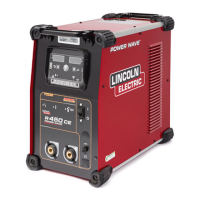
How to fix a non-functioning real time clock on my Lincoln Electric POWER WAVE R450?
If the “Real Time Clock” is no longer functioning on your Lincoln Electric Welding System, replace the battery (Type: BS2032).
| Input Phase | 3-Phase |
|---|---|
| Output Current Range | 5 - 450A |
| Duty Cycle | 60% |
| Efficiency | 85% |
| Output Voltage Range | 10 - 38V |
| Rated Output | 450A |
| Processes | MIG, TIG, Stick, Flux-Cored |
| Wire Feed Speed | 50-700 in/min |
Examine carton and equipment for damage immediately upon receipt to file claims.
Prioritize reading the manual and all safety precautions before installation, operation, or repair.
Ensure proper ventilation and wear appropriate protective gear for welding safety.
Follow specific safety procedures when working with materials that may release toxic fumes.
Notifies about potential carcinogens or reproductive harm from engine exhaust.
Highlights arc welding dangers and advises pacemaker users to consult a physician.
Provides critical safety instructions specific to operating engine-powered equipment.
Warns about potential dangers and interference from EMF generated during welding.
Strict measures to avoid electric shock from live parts and ensure proper insulation.
Guidelines for using protective shields, lenses, and clothing against arc rays.
Emphasizes ventilation and respiratory protection to mitigate risks from welding fumes and gases.
Procedures to remove fire hazards and prevent ignition from welding sparks.
Essential precautions for handling and securing compressed gas cylinders to prevent explosions.
Safety rules for operating equipment connected to electrical power sources.
States compliance with FCC rules for digital devices and interference.
Details compliance with Industry Canada standards for RF exposure and interference.
Covers EMC conformance to EU directives and general principles of electromagnetic emissions.
Outlines user responsibilities for installation and assessing potential EMC issues in the operating environment.
Discusses techniques like proper grounding, cable routing, and shielding to minimize emissions.
Specifies input voltage, current, and rated output for various welding processes.
Provides guidance on selecting appropriate input wiring and fuse/breaker sizes based on load.
Lists the output ranges and open-circuit voltages for different welding processes.
Details the physical dimensions, weight, and environmental operating/storage temperatures.
Essential safety warnings for qualified personnel before and during installation.
Guidelines for selecting a safe location, proper grounding, and ensuring machine stability.
Covers input/ground connections, high frequency protection, and FCC regulatory statements.
Proper techniques for lifting the equipment and confirmation that stacking is not allowed.
Instructions for qualified electricians on connecting input power and grounding the machine.
Recommendations for selecting correct input fuses and supply wire sizes to prevent issues.
Information on the machine's ability to automatically adjust to different input voltages.
Recommends using an ArcLink compatible wire feeder for optimal MIG welding performance.
Table showing cable sizes for combined electrode and work cables based on amperage and duty cycle.
Advice on selecting appropriate cable sizes, routing, and ensuring clean, tight connections.
Explains how cable inductance impacts welding performance and methods to minimize it.
Guidelines for proper attachment and routing of voltage sense leads for accurate arc voltage readings.
Describes the integrated electrode sense lead and its automatic configuration based on weld mode.
Advises using remote work voltage sense leads for optimal performance and correct connection procedures.
Details the machine's automatic polarity sensing capability for negative electrode operations.
Emphasizes the importance and recommendation of remote voltage sense leads for multi-arc setups.
Provides specific connection strategies for sense leads when they are used or not used in multi-arc welding.
General recommendations for using Lincoln control cables and proper routing to avoid interference.
Instructions for connecting the power source to ArcLink compatible wire feeders using the control cable.
Guidelines for connecting to Ethernet networks using shielded Cat 5e cables and proper grounding.
Lists essential safety precautions to review before operating the welding machine.
Explains the meaning of various graphic symbols and indicators found on the machine and in the manual.
Describes the machine's startup process and the definition of duty cycle rating.
Introduces the R450 as a versatile multi-process welder with advanced features.
Details the limitations on welding processes and compatible wire feeders or user interfaces.
Lists recommended welding processes like GMAW, FCAW, SMAW, GTAW and associated equipment.
Identifies and describes the function of front panel controls like LEDs, buttons, and connectors.
Provides a table detailing the pin assignments for work and electrode voltage sense connections.
Lists and describes connectors on the rear panel, including feeder, I/O, Ethernet, and circuit breaker.
Explains the terminal strip for external I/O connections, its grouping, and input logic.
Discusses user responsibility for weld quality and selecting appropriate processes and modes.
Explains the differences between Non-Synergic and Synergic welding modes.
Details fundamental controls like Wire Feed Speed (WFS), Amperage, Voltage, Trim, and UltimArc™ Control.
Describes how to set and control parameters for Stick and TIG welding processes.
Explains Synergic CV, Non-Synergic CV, and the function of the Pinch adjustment.
Details how to set pulse welding parameters and adjust Trim for arc length control.
Describes the digital display for showing welding feedback and changing communication parameters.
Provides instructions on how to navigate through the user configuration menu using the controls.
Guides on selecting and displaying additional parameters like True Energy, Motor Current, or WeldScore.
Explains how to switch the display between Wire Feed Speed in Inches per Minute (IPM) and Meters per Minute (MPM).
Instructions for viewing the IP address of the front Ethernet port.
Instructions for viewing the IP address of the rear Ethernet port.
Details on enabling, disabling, configuring Wi-Fi, and displaying its IP address.
How to manage Bluetooth settings, enable/disable, and view the device name.
Explains the meaning of the Wi-Fi status indicator lights for connection strength and status.
Explains the meaning of the Bluetooth status indicator light for connection status.
Information on Lincoln Electric's range of welding fume extraction systems.
Critical safety warnings to follow before performing any maintenance or servicing.
Outlines routine cleaning procedures and the importance of periodic calibration checks.
Details factory calibration and how to perform adjustments using the Power Wave Manager.
Step-by-step instructions on effectively using the guide to diagnose and resolve machine issues.
Explains how to read status lights for error codes and system diagnostics.
Lists and explains error codes originating from the main control board, indicating various system faults.
Details error codes associated with the input control board, covering voltage, current, and power issues.
Lists and explains error codes specific to the wire drive module, such as motor overload and overcurrent faults.
Provides solutions for problems related to blowing fuses, no power, or incorrect input voltage.
Guides on diagnosing and fixing issues where the machine has no output or triggers thermal errors.
Offers solutions for when the thermal LED is active or the real-time clock is malfunctioning.
Covers common issues affecting weld quality, such as wire feed, cabling, and shielding gas problems.
Provides steps to resolve wire burning back to the tip and machine output shutdowns.
Guides on fixing issues related to low welding output or excessively long and erratic arcs.
Helps troubleshoot Ethernet connection problems, including physical connections, IP addressing, and network speed.
Addresses intermittent connection drops during welding, often caused by cable placement.
Details the company's policy on providing technical advice and information regarding product usage.
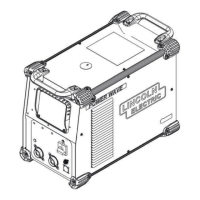

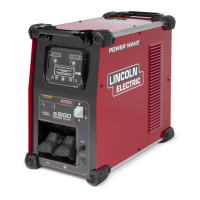
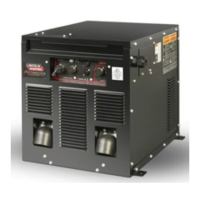
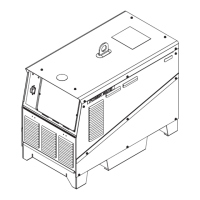
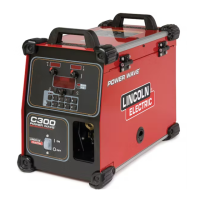

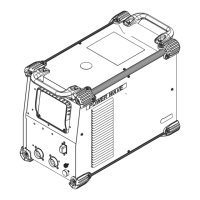
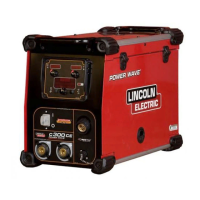

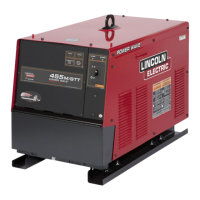
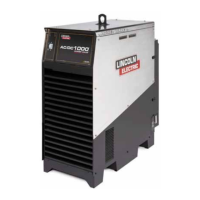
